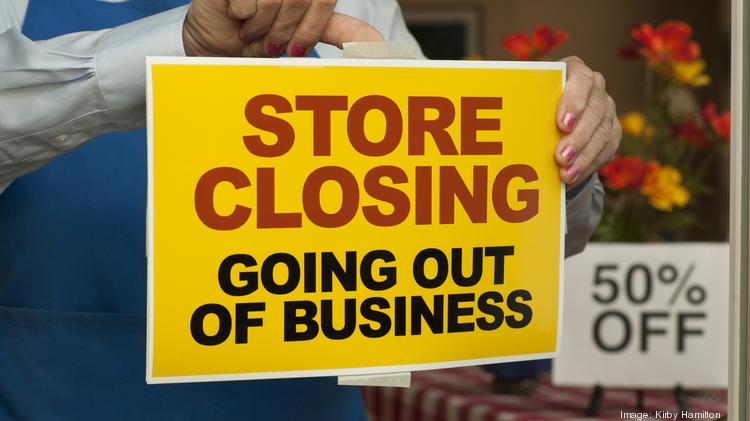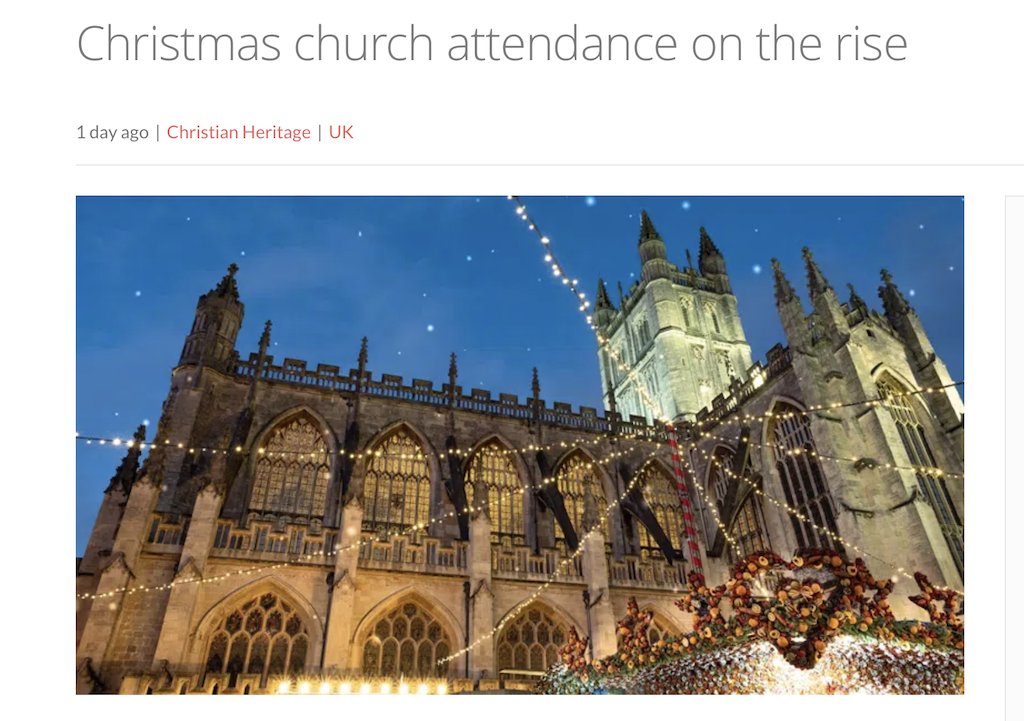October 7, 2019
Is Our Problem The Pull Factor of the World, or the Push Factor of the Church?

If you own a flower shop and your customer base goes into decline, it’s worth asking what are the pull factors and the push factors putting your business at risk.
The pull factors are those things that draw your customers away from your shop to other shops. These are hard to control. Maybe taste has changed. Maybe the mood is for less flowers and more foliage. You cannot shape the external circumstances that change the market.
But the push factors? That’s a different matter all together. The push factors are those things that drive your customers away from your shop, or if not drive them away, then dismantle their reasons for remaining loyal to you. And those factors are absolutely within your control. If you don’t address those factors you are headed for terminal decline.
Maybe you’re not in decline because of what’s going on out there, as much as you are in decline because of what’s not going on in here.
Trouble is, many businesses that do go in to terminal decline, do so on the basis of blaming the pull factors alone – the “out there” stuff – and rarely, if ever, address what’s wrong with what they are offering. They never deal with the push factors – the “in here” stuff that they could deal with.
And you can see why. When you’re steadfastly committed to something, it’s painful to change, or even admit there is a problem in the first place. But it’s painful to die as well, so pain is not optional here. Yet many businesses, when faced with decline, seem to opt for slow painful death, rather than deep painful change.
Which brings me to two recent articles on the Sydney Anglican website around not only the decline in numbers at that diocese’ churches but the decline in committed weekly attendance by those who do attend. If you want to put it in crass business terms, the Anglican Church in Sydney is suffering from both customer decline and customer commitment.
You can read these two articles here, and here.
Now in some senses, welcome to the secular world we inhabit. Lots of churches, especially mainline liberal denominations are in terminal decline. If they were horses, they’d have been taken to the knackers’ yard a long time ago. But when you’ve got a lot of property and rental income you can continue as a zombie denomination for decades.
Which is why, when these churches give up the gospel foundation they once held to, they can busy themselves with all sorts of secular vanity projects – and promote downright ungodliness and great blasphemies, all the while keeping their sandstone buildings up to scratch.
However evangelical Anglicanism, and Sydney Anglicanism, in particular, can never be accused of doing that. The gospel is clearly still front and centre. Yet, as both articles are bold enough to state, the decline is clear among their cohort too. And the self-assessment of many Sydney Anglicans, according to these two articles, is that the stated frequency of attendance by adherents is an embellishment. It’s gilding the lily. They’re not turning up anywhere nearly as often as they say they are.
So far, so good. The articles were honest. But here’s the problem. The articles were honest about the pull factors that are leading to the decline in numbers and commitment. But nowhere was there any examination of the push factors. And if you’re following my flower shop example, that’s a significant step towards closure.
Hence in the second article in particular, there were good observations about how the secular frame has pressed the church hard. The writer states:
Back in the day church was the only social organiser. But with the mass availability of the car and TV, things began to change. Now there are alternatives, now there is competition to church. Today, in a post-Christian climate, people gather at the modern temples: shopping centres, beach, fun runs, restaurants…We tried to keep up with the non-Christian Joneses. To an extent, we filled our lives with what they fill their lives with, but without stopping church altogether and got exceedingly busy in the process. Something has to give.
And we get that. That’s been talked about ad nauseum by evangelicals exploring the decline in church. The article also references Charles Taylor and his tome, A Secular Age, to push the point.
But here’s the blind spot. Both articles assume that the primary competition is for our time. Now there are “alternatives” to church, “competition”, as the article puts it. To which we have to ask, alternatives to what? Competition for what? The assumption seems to be that if the pace of external life was slowed down, or a range of options such as the beach and shopping were removed, then the competition for that time would die down somewhat, and people would drift back to church.
The irony is, in that referencing Taylor, the author misses a central thrust of his argument in A Secular Age. The primary feature of secularism is its immanence, its uncritical acceptance that this is all there is; that the natural order, the material, is all that exists. We live under a hermetically sealed dome in which nothing immaterial or spiritual gets in, and nothing – including prayer – gets out. This is all there is. The primary competition is not for our time, but for the locus of our desires.
And I want to suggest, and I do so carefully, but in light of many a conversation with evangelical Anglicans in Sydney recently, that the vexing problem of decline and intermittent attendance has less to do with the pull factor of busyness “out there”, and more to do with the push factor of uncritiqued immanence within our churches. Or to put it another way – the lack of transcendence “in here” is literally shutting us down.
We haven’t been captivated by shopping and beaches and restaurants as much as we been captivated by immanence. Too many of our church experiences are completely immanent, despite the soaring lofty words that are spoken within them.
For several decades now, many conservative evangelicals have taken a perverse pride in scolding people for saying that what we do when we gather in church is worship. Haven’t you heard, everything is worship?! What we’re doing is strictly edification. Nothing is vertical and everything is horizontal.
Here’s the problem with that: Everything out there – all of the pull factors – are immanent and horizontal. But we were created for thick vertical relationship with God. And when the immanent frame offers so many horizontal experiences (and there is a intended pun there), and does so with a dazzling array of choice and pleasure, then no horizontal experience of church can match it. Besides, as Syndrome says in The Incredibles, “When everyone is super, no one will be.” It’s the same with worship. Make it stretch to fit everything and it soon means nothing.
We’ve given up a deep commitment to transcendence at exactly the time the culture has the technology, expertise and marketing power to offer worshippers (and remember, as David Foster Wallace said – “everybody worships”) a far more visceral experience of life than we can possibly muster.
We’re afraid of transcendence, of God breaking through the dome. And we’ve abandoned it at precisely the wrong moment in Western history. At precisely the time that the culture is offering its own secular version of transcendence in an array of glitter, rainbows and smart phones.
And we’re paying for this neglect of transcendence through declining attendance. I spoke to two people who attend Anglican Churches in Sydney last week, one of whom said they share communion in church together one a month, and the other, once a term! How did that happen? How did the Lord’s Supper get to be a bothersome add on in church?
We have communion every week. I made that commitment in the context of being an independent church that is made up of a variety of people who have little experience of that pattern. We determined that we would shape what we do in church in such a way, that the desire to share communion, confess sin, break that bread, drink that cup, as a response to an encounter with the living God was a necessary response. If communion feels like an add-on that is taking up time, something has gone wrong.
Church ought to feel like a thick experience of God and his people, given that we are the temple of the living God, and that his Spirit is among us collectively as we gather. If that’s true then why does church so often feels as thin as the secular frame?
Yet we keep insisting that church is primarily about edification and not worship. It’s almost blasphemous in some circles to suggest church is focussed on the vertical. But we then bemoan the fact that people discover they can be better edified with a podcast sermon, and a glass of wine by the beach.
This shibboleth is the reason that too many of our sermons are like the moon: clear, bright and cold. It’s why our sermon applications are reduced to “read your Bible”, and “evangelise your neighbours”. What? In order to bring them here? Why would we? the beach, restaurants and shops are far more visceral. Besides, what if no one talks to them?
Perhaps the biggest blindspot, the biggest neglect of all, is the centre of our discipleship. I fully agree with the sentiment in the first of these articles, when it says:
We need to learn to say “No” to the world more and more. We need to understand the cost of discipleship again. I rarely hear Christians today echo the sentiments of Ps 27:4:
One thing I ask from the LORD,
this only do I seek:
that I may dwell in the house of the LORD
all the days of my life,
to gaze on the beauty of the LORD
and to seek him in his temple.
But surely this is the disconnect. The “cost” of discipleship? There’s absolutely nothing in that passage from Ps27 that talks about the cost of discipleship, and everything that talks about the joy of discipleship. You won’t harangue people out of the joy of restaurants and beaches, you can only woo them with an even greater joy. No one ever scolded someone out a habit as much as gave them a vision of something bigger and better.
But if our a priori commitment is that nothing in church is about gazing on the beauty of the LORD, then our people are suckers for the beauty of the immanent frame.
And if our a priori commitment is that we don’t gather as the living temple to gaze – vertically – at the beauty of the LORD, because after all everything is worship, then our people will continue to worship at the temples of Mammon which, sadly, are offering a more transcendent exchange – and it is an exchange – than we are currently offering.
The pull factors exist, no doubt about it. But maybe we should sit back and look at the push factors. Because if we don’t, this decline could prove to be terminal, and the “CLOSED DOWN” sign will be stuck in the window before too long.
Written by
There is no guarantee that Jesus will return in our desired timeframe. Yet we have no reason to be anxious, because even if the timeframe is not guaranteed, the outcome is! We don’t have to waste energy being anxious; we can put it to better use.
Stephen McAlpine – futureproof
Stay in the know
Receive content updates, new blog articles and upcoming events all to your inbox.


